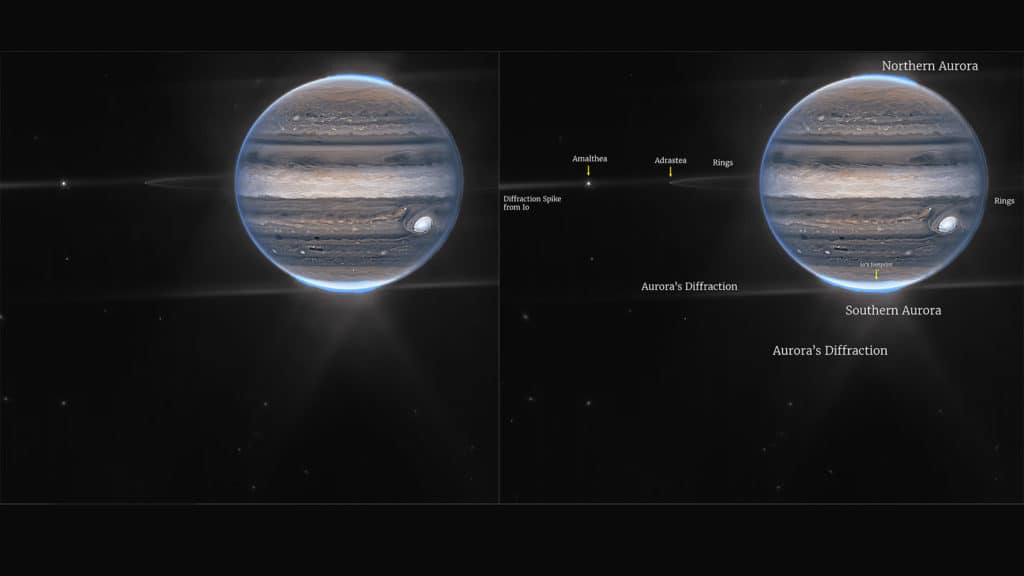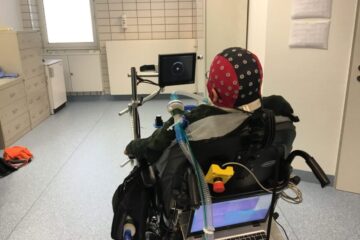The James Webb Space Telescope is the world’s largest, most powerful, and most complex space science telescope that aims to solve mysteries in our universe. Recently, Webb has captured new images of planet Jupiter, offering clues to Jupiter’s inner life.
The images captured by Webb revealed that Jupiter is currently experiencing: giant storms, powerful winds, auroras, and extreme temperature and pressure conditions. The two images come from the observatory’s Near-Infrared Camera (NIRCam) and showcase the details of the planet.
In the composite of many Webb photographs used to produce the standalone view of Jupiter, auroras can be seen extending to great heights above both the northern and southern poles of the planet. The light from the auroras is filtered via a redder color map, highlighting light reflected from lower clouds and upper hazes. The northern and southern poles can be seen to be surrounded by hazes in a separate filter that is mapped to yellows and greens. The light that is reflected from a deeper main cloud is displayed by a third filter that is blue-mapped.
The famous great red spot appears white in the views, like other clouds, because they reflect a lot of sunlight. The brightness here indicates high altitude – so the Great Red Spot has high-altitude hazes, as does the equatorial region.
Heidi Hammel, Webb interdisciplinary scientist for solar system observations and vice president for science at AURA, said, “The brightness here indicates high altitude – so the Great Red Spot has high-altitude hazes, as does the equatorial region. The numerous bright white ‘spots’ and ‘streaks’ are likely very high-altitude cloud tops of condensed convective storms.”
Webb was also able to see Jupiter’s faint rings- a million times fainter than the planet, and two moons called Amalthea and Adrastea in the wide-field view. The science of the Jupiter system programme, which examines the dynamics and chemistry of Jupiter itself, its rings, and its satellite system, may be summed up in this single image.

Planetary astronomer Imke de Pater, professor emerita of the University of California, Berkeley, said, “We hadn’t expected it to be this good, to be honest. Remarkably, we can see details on Jupiter’s rings, tiny satellites, and even galaxies in one image.”
“The two images come from the observatory’s Near-Infrared Camera (NIRCam), which has three specialized infrared filters that showcase details of the planet. Since infrared light is invisible to the human eye, the light has been mapped onto the visible spectrum. Generally, the longest wavelengths appear redder, and the shortest wavelengths are shown as more blue.”













